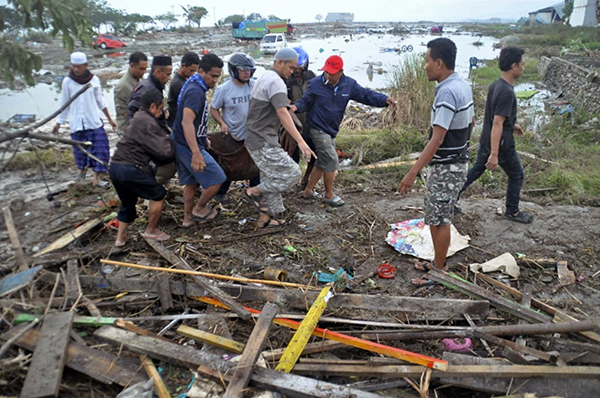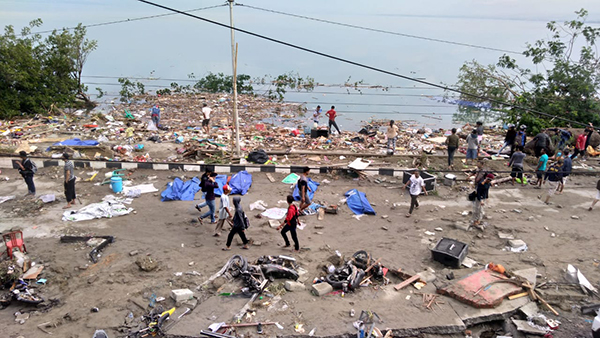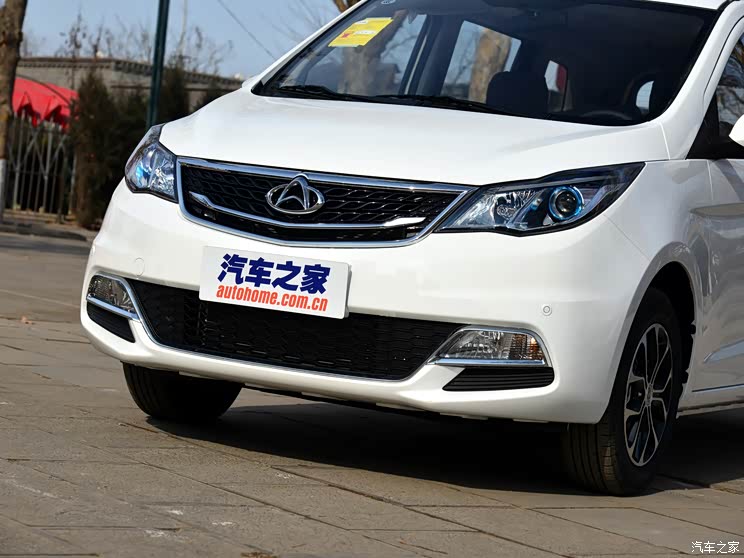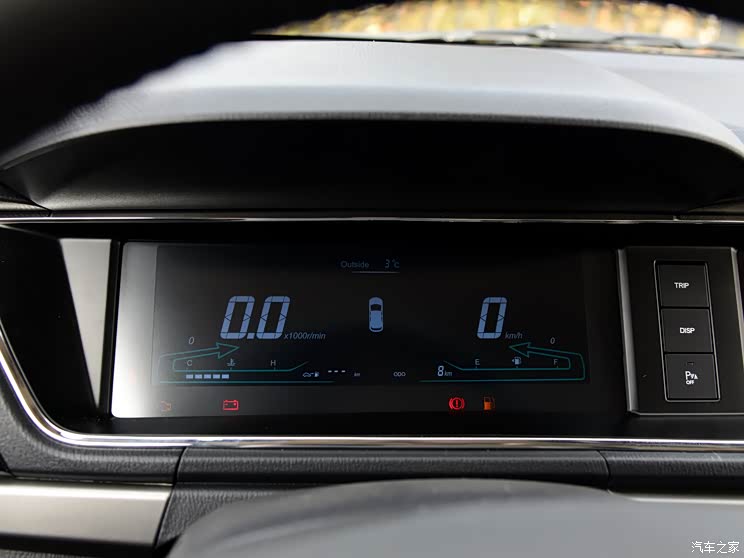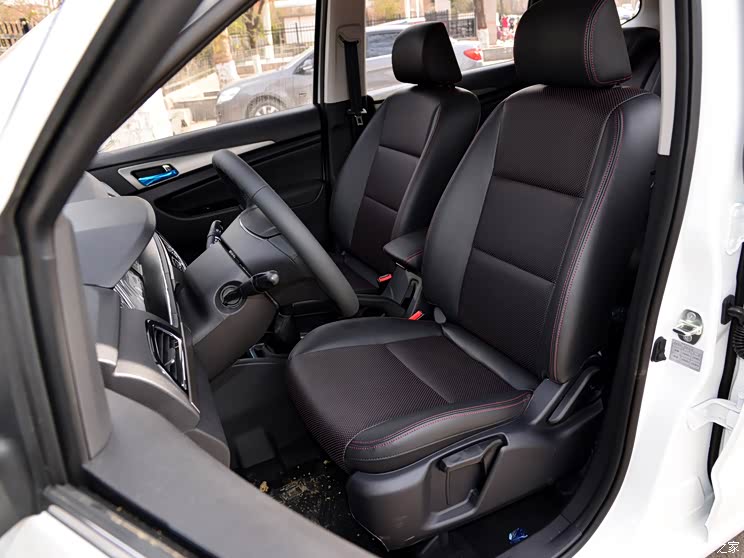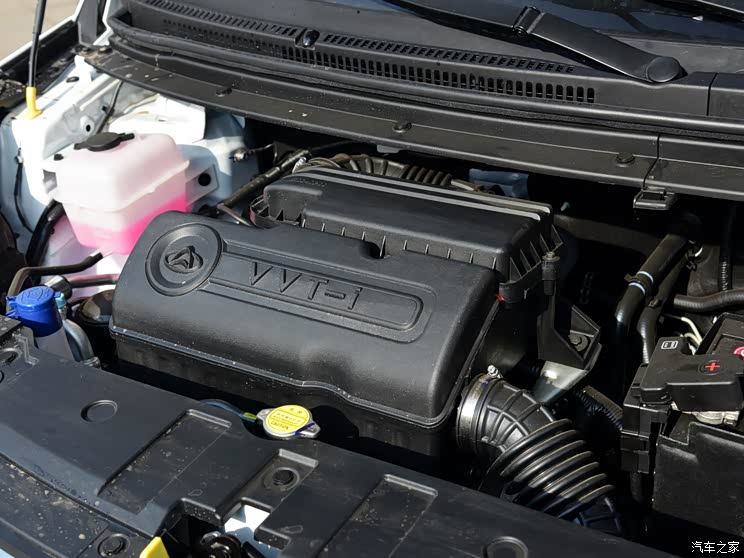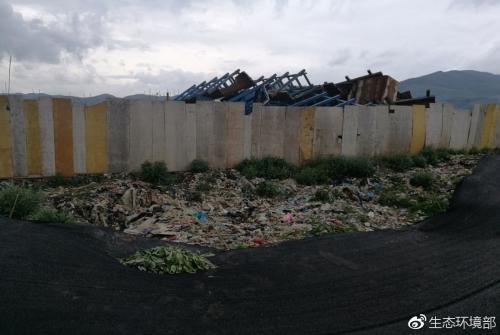CCTV News:According to the website of the Supreme People’s Court, the Supreme Law issued the Provisions of the Supreme People’s Court on Several Issues Concerning the Trial of Independent Letter of Guarantee Disputes. The full text is as follows:
Provisions of the Supreme People’s Court on Several Issues Concerning the Trial of Independent Letter of Guarantee Disputes were adopted at the 1688th meeting of the Judicial Committee of the Supreme People’s Court on July 11, 2016, and are hereby promulgated and shall come into force as of December 1, 2016.
the Supreme People’s Court
November 18, 2016
Fa Shi [2016] No.24
The Supreme People’s Court about
Provisions on Several Issues Concerning the Trial of Independent Letter of Guarantee Disputes
(July 11, 2016, the 1688th the Supreme People’s Court Judicial Committee.
Adopted at the meeting and implemented as of December 1, 2016)
In order to correctly hear disputes over independent letters of guarantee, earnestly safeguard the legitimate rights and interests of the parties, serve and guarantee the construction of the Belt and Road, and promote opening up, these Provisions are formulated in accordance with the General Principles of the Civil Law of People’s Republic of China (PRC), the Contract Law of People’s Republic of China (PRC), the Guarantee Law of People’s Republic of China (PRC), the Law on the Application of Laws in Foreign-related Civil Relations in People’s Republic of China (PRC), the Civil Procedure Law of People’s Republic of China (PRC) and other laws, and in combination with the actual trial:
Article 1 The term "independent letter of guarantee" as mentioned in these Provisions refers to a written promise issued by a bank or a non-bank financial institution as an issuer to the beneficiary, agreeing to pay a specific amount or within the maximum amount of the letter of guarantee when the beneficiary requests payment and submits documents that meet the requirements of the letter of guarantee.
The documents mentioned in the preceding paragraph refer to the payment request, breach of contract statement, documents issued by a third party, court decisions, arbitral awards, bills of exchange, invoices and other written documents that indicate the occurrence of payment due events as stated in the independent guarantee.
An independent letter of guarantee may be issued at the request of the applicant of the letter of guarantee or at the instruction of another financial institution. Where the issuer issues an independent letter of guarantee as instructed, it may require the instructing person to issue an independent letter of guarantee to guarantee the right of recourse.
Article 2 The independent letter of guarantee disputes mentioned in these Provisions refer to disputes arising from the opening, cancellation, modification, transfer, payment and recovery of independent letters of guarantee.
Article 3 If a letter of guarantee is in any of the following circumstances, the people’s court shall support it if the parties claim that it is an independent letter of guarantee, except that the letter of guarantee does not specify the documents on which payment is made and the maximum amount:
(1) The letter of guarantee states that payment shall be made on demand;
(2) The letter of guarantee specifies that the Uniform Rules for Demand Guarantees of the International Chamber of Commerce and other model rules for independent letter of guarantee transactions shall apply;
(3) According to the text of the letter of guarantee, the issuer’s payment obligation is independent of the basic transaction relationship and the legal relationship of the letter of guarantee application, and it only bears the payment responsibility of conforming documents.
The people’s court will not support the claim that the independent guarantee is a general guarantee or a joint guarantee on the grounds that the corresponding basic transaction is recorded.
The people’s court does not support the claim that the independent guarantee is applicable to the provisions of the security law on general guarantee or joint guarantee.
Article 4 The opening time of an independent guarantee is the time when the issuer issues an independent guarantee.
An independent letter of guarantee shall take effect immediately upon issuance, unless the effective date or event is specified in the independent letter of guarantee.
The people’s court shall support an independent letter of guarantee that is not stated to be revocable and the parties claim that it is irrevocable after it is issued.
Article 5 If an independent letter of guarantee states that the Uniform Rules for Demand Guarantees and other model rules for independent letter of guarantee transactions are applicable, or the issuer and the beneficiary unanimously cite them before the end of the debate in the court of first instance, the people’s court shall consider that the contents of the model rules for transactions constitute an integral part of the terms of the independent letter of guarantee.
Without the circumstances mentioned in the preceding paragraph, the people’s court shall not support the claim that the independent guarantee is applicable to the relevant model trading rules.
Article 6 The people’s court shall support the beneficiary’s request that the issuer bear the responsibility for payment according to the independent letter of guarantee, because the documents submitted by the beneficiary are apparently consistent with the terms of the independent letter of guarantee and between documents.
The people’s court shall not support the issuer’s defense against the payment obligation by the basic transaction relationship or the independent guarantee application relationship, except in the case of Article 12 of these Provisions.
Article 7 The people’s court shall, when determining whether it constitutes apparent conformity, conduct an examination according to the standards for examining documents specified in the independent letter of guarantee; If the independent guarantee is not specified, it may refer to the relevant document examination standards determined by the International Chamber of Commerce.
If the documents are not completely consistent with the terms of the independent letter of guarantee, or between documents, but it does not lead to ambiguity between them, the people’s court shall consider that they are superficially consistent.
Article 8 The issuer has the right and obligation to independently examine the documents, and has the right to decide whether the documents are in apparent conformity with the terms of the independent letter of guarantee or not, and to decide whether to accept or reject the discrepancies.
If the issuer has clearly indicated to the beneficiary that it accepts the discrepancy, and the beneficiary requests the issuer to bear the responsibility for payment, the people’s court shall support it.
If the issuer refuses to accept the discrepancy, and the beneficiary requests the issuer to bear the payment responsibility on the grounds that the applicant of the letter of guarantee has accepted the discrepancy, the people’s court will not support it.
Article 9 The people’s court shall support the issuer’s recourse against the applicant of the guarantee after payment based on the independent guarantee, unless there are discrepancies in the documents submitted by the beneficiary.
Article 10 If an independent letter of guarantee does not specify both the negotiable documents and the documents on which the new beneficiary is determined, and the issuer claims that the transfer of the beneficiary’s right of claim for payment is not valid for it, the people’s court shall support it. Where an independent guarantee has special provisions on the transfer of the beneficiary’s right to claim payment, such provisions shall prevail.
Article 11 If an independent letter of guarantee has one of the following circumstances, and the parties claim that the rights and obligations of the independent letter of guarantee are terminated, the people’s court shall support it:
(1) The beneficiary fails to submit the documents that meet the requirements of the independent guarantee when the expiration date or event specified in the independent guarantee expires;
(2) All the payables under the independent guarantee have been paid;
(3) The amount of the independent guarantee has been reduced to zero;
(4) The issuer receives a document issued by the beneficiary exempting the payment obligation under the independent guarantee;
(five) other circumstances stipulated by law or agreed by the parties to terminate.
The people’s court shall not support an independent letter of guarantee where the rights and obligations mentioned in the preceding paragraph are terminated and the beneficiary claims the right to claim payment on the grounds that he holds the text of the independent letter of guarantee.
Article 12 In any of the following circumstances, the people’s court shall determine that it constitutes an independent letter of guarantee fraud:
(1) The beneficiary colludes with the applicant for the letter of guarantee or others to fabricate the underlying transaction;
(2) The third-party documents submitted by the beneficiary are forged or have false contents;
(3) The court judgment or arbitral award determines that the debtor of the underlying transaction has no liability for payment or compensation;
(4) The beneficiary confirms that the debt of the underlying transaction has been fully fulfilled or that the payment due event specified in the independent guarantee has not occurred;
(5) Other circumstances in which the beneficiary abuses the right of claim for payment knowing that he has no right.
Article 13 Where an applicant, issuer or indicator of an independent letter of guarantee finds any of the circumstances mentioned in Article 12 of these Provisions, he may apply to the issuer’s domicile or other people’s court with jurisdiction over the fraud dispute case of independent letter of guarantee for suspension of payment, or apply during the litigation or arbitration.
Article 14 When a people’s court decides to suspend the payment under an independent guarantee, it must meet the following conditions at the same time:
(a) the evidence submitted by the applicant to stop payment proves that the existence of Article 12 of these Provisions is highly probable;
(2) In case of emergency, failure to take immediate measures to stop payment will cause irreparable damage to the legitimate rights and interests of the applicant for stopping payment;
(3) The applicant for stopping payment has provided a guarantee sufficient to make up for the losses that the respondent may suffer due to stopping payment.
The people’s court shall not support the request of the applicant to stop payment on the grounds that the beneficiary has breached the contract in the basic transaction.
If the issuer has paid in good faith under the independent guarantee issued in accordance with the instructions, the people’s court shall not order the payment of the independent guarantee that guarantees the issuer’s right of recourse.
Fifteenth losses caused by the wrong application for stopping payment, the people’s court shall support the request for compensation from the applicant for stopping payment.
Article 16 The people’s court shall make a written ruling within 48 hours after accepting the application for stopping payment. The ruling shall specify the applicant, the respondent and the third party, and include the facts preliminarily ascertained and the reasons for whether to approve the application for stopping payment.
If an order is made to suspend payment, it shall be executed immediately.
If the applicant for stopping payment fails to bring an independent letter of guarantee fraud dispute lawsuit or apply for arbitration according to law within 30 days after the order for stopping payment is made, the people’s court shall lift the order for stopping payment.
Article 17 If a party disagrees with the ruling made by the people’s court on the application for stopping payment, it may apply to the people’s court that made the ruling for reconsideration within 10 days from the date when the ruling is served. The execution of the ruling shall not be suspended during the reconsideration period.
The people’s court shall, within ten days after receiving the application for reconsideration, examine it and ask the parties concerned.
Article 18 The people’s court may examine and determine the relevant facts of the basic transaction according to the specific circumstances of Article 12 of the present Provisions advocated by the parties when trying the case of fraud disputes over independent letters of guarantee or handling the application for stopping payment.
Article 19 If an applicant for a letter of guarantee only sues the beneficiary in an independent letter of guarantee fraud lawsuit, the issuer and the indicator of the independent letter of guarantee may apply for participation as a third party, or be notified by the people’s court.
Article 20 If the people’s court, after hearing a dispute over the fraud of an independent letter of guarantee, can find that it constitutes fraud of an independent letter of guarantee beyond a reasonable doubt, and the third paragraph of Article 14 of these Provisions does not exist, it shall order the issuer to stop paying the requested amount under the independent letter of guarantee.
Article 21 Disputes between the beneficiary and the issuer arising from the independent letter of guarantee shall be under the jurisdiction of the people’s court at the domicile of the issuer or the defendant, unless the independent letter of guarantee states that it shall be under the jurisdiction of other courts or submitted for arbitration. If the parties claim to determine the competent court or submit it to arbitration according to the dispute settlement clause of the basic transaction contract, the people’s court will not support it.
Cases of fraud disputes over independent letters of guarantee shall be under the jurisdiction of the people’s court in the place where the issuer of the independent letter of guarantee whose payment is requested to be stopped or the defendant’s place of residence, unless the parties have agreed in writing to be under the jurisdiction of other courts or submitted to arbitration. If the parties claim to determine the competent court or submit it to arbitration according to the dispute settlement clause of the basic transaction contract or independent guarantee, the people’s court will not support it.
Article 22 If the applicable law is not specified in the foreign-related independent guarantee, and the issuer and the beneficiary have not reached an agreement on the applicable law before the conclusion of the debate in the court of first instance, the law of the issuer’s habitual residence shall apply to the disputes arising from the foreign-related independent guarantee between the issuer and the beneficiary; Where an independent letter of guarantee is issued by a legally registered branch of a financial institution, the laws of the place where the branch is registered shall apply.
If the parties fail to reach an agreement on the applicable law in the fraud dispute of foreign-related independent guarantee, the law of the issuer of the independent guarantee whose payment is requested to be stopped shall apply; Where an independent letter of guarantee is issued by a legally registered branch of a financial institution, the laws of the place where the branch is registered shall apply; If the parties have a common habitual residence, the law of the common habitual residence shall apply.
The procedures for stopping payment and preserving foreign-related independent letters of guarantee shall be governed by the laws of People’s Republic of China (PRC).
Article 23 If the parties agree to apply an independent letter of guarantee in domestic transactions, and one party claims that the agreement on the independence of the letter of guarantee is invalid on the grounds that the independent letter of guarantee has no foreign factors, the people’s court will not support it.
Article 24 The people’s court may take measures to freeze the deposit issued in accordance with the independent guarantee managed by the special account and handed over to the issuer, but it may not deduct it. When the money in the deposit account loses the function of opening a deposit, the people’s court may take deduction measures according to law.
If the issuer has fulfilled its external payment obligations, the people’s court shall, upon the application of the issuer, lift the freezing measures for the corresponding part of the deposit.
Twenty-fifth cases that have not been finalized after the implementation of these Provisions shall be applicable to these Provisions; These Provisions shall not apply to cases that have been finalized before the implementation of these Provisions, where the parties apply for retrial or the people’s court retries in accordance with the procedure of trial supervision.
Article 26 These Provisions shall come into force as of December 1, 2016.
